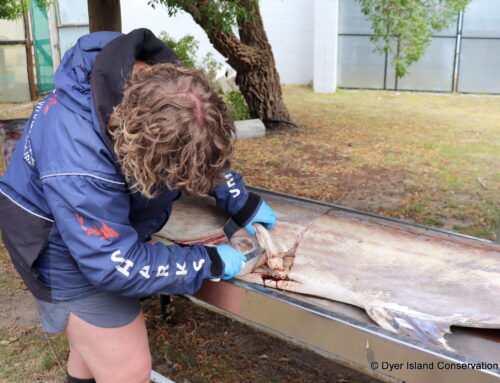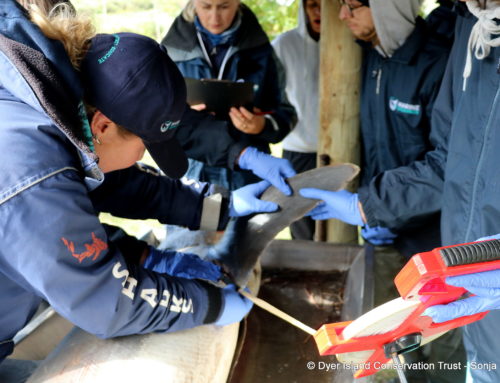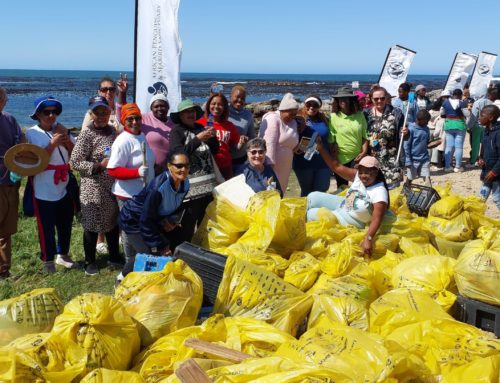There is something mythical and lyrical about seeing an albatross out at sea…
The albatross is a large, magnificent seabird capable of soaring incredible distances without rest. Long viewed with superstitious awe by sailors, they spend most of their time gliding over the open ocean. Most people around the world rarely get a glimpse of these unique birds because even when they do visit dry land, it’s often only to breed on remote islands before going back out to sea. Despite the distance they’ve managed to maintain from people, however, most albatross species are now threatened with extinction due to human activities.
According to Wilfred Chivell, Founder of the Dyer Island Conservation Trust: “The DICT have had the honour to care for quite a number of albatrosses through the years and we hope they will be part of creating future generations. The three species we have rehabilitated have been Black-browed Thalassarche melanophris, Indian Yellow-nosed T. carteri and Shy T. cauta Albatrosses.
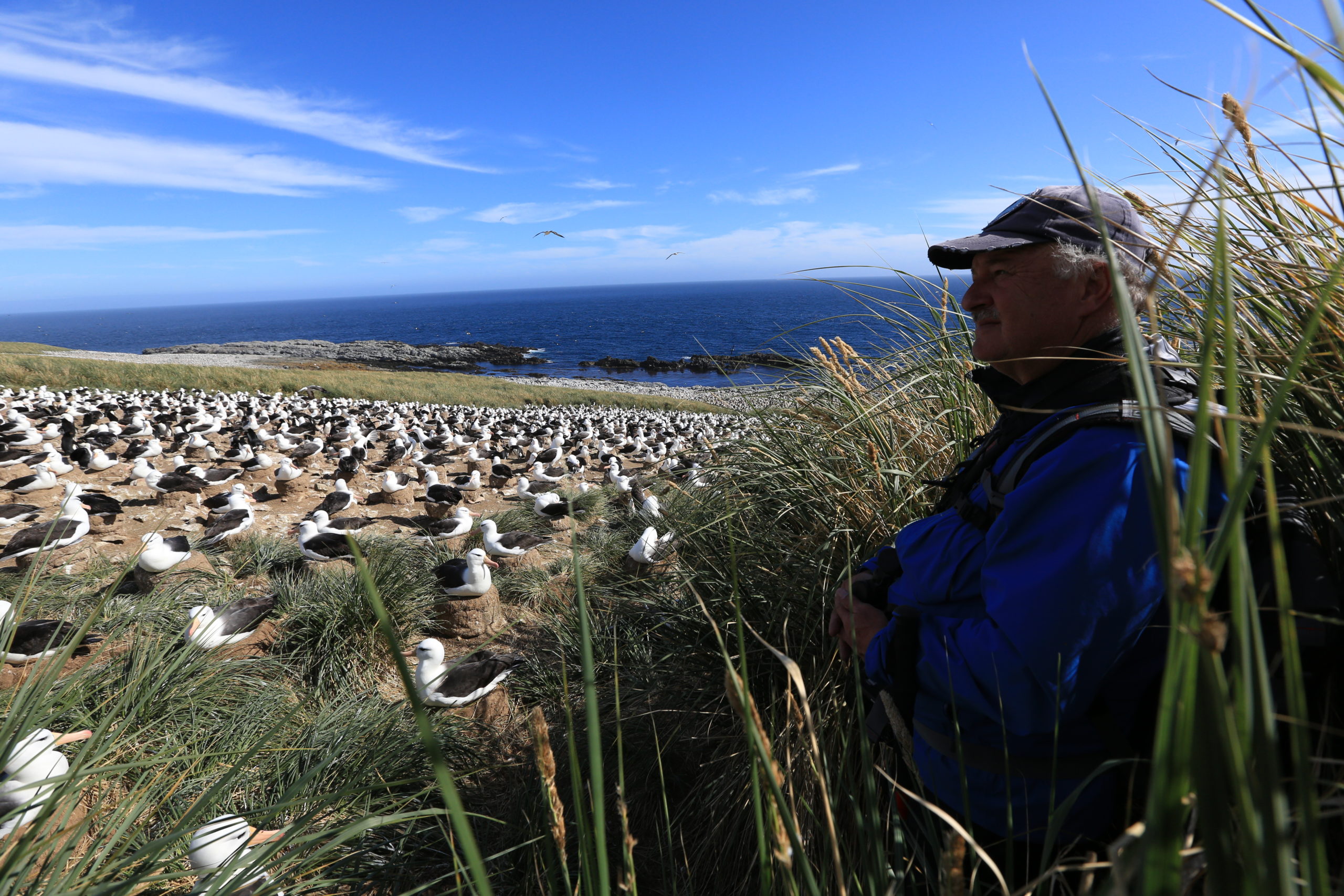
Wilfred Chivell, Chief Executive Officer, Dyer Island Conservation Trust with Black-browed Albatrosses on Steeple Jason in the South Atlantic
Wilfred has travelled the globe to see various species of albatross with his favourites he says being the Wandering Diomedea exulans and Campbell T. impavida Albatrosses. He is fascinated by their migrations and their long life spans, and shares the species seen off the South African shores with like-minded birders.
“World Albatross Day will help highlight these incredible species and most importantly the threats they face. I have been most impressed with the efforts to preserve the albatrosses of South Georgia [Islas Georgias del Sur]* and the sub Antarctic islands of New Zealand. I am also grateful to BirdLife International for its efforts in addressing the impacts of trawlers” says Wilfred.
On a recent visit to the Galapagos Islands, a dream came true, when Wilfred got to see the Waved Albatross (Phoebastria irrorata), “an epic, emotional and unforgettable experience”.
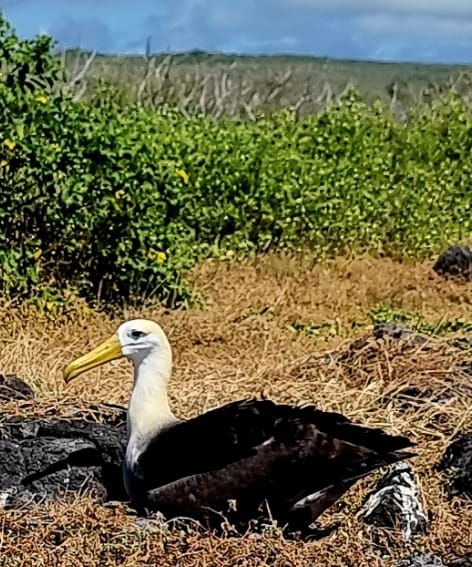
Waved Albatross picture taken by Wilfred Chivell
The theme for this year’s World Albatross Day is “Plastic Pollution”, and we would like to share and article by Emeritus Information Officer, John Cooper, from the Agreement on the Conservation of Albatrosses and Petrels (www.acap.org).
Plastic pollution is the theme for this year’s World Albatross Day on 19 June
The Agreement on the Conservation of Albatrosses and Petrels (ACAP) has chosen the theme “Plastic Pollution” to mark the fourth World Albatross Day, being celebrated on 19 June. The annual celebration occurs on the date the Agreement was signed in 2001. It aims to increase awareness of the continuing conservation crisis faced by ACAP’s 31 listed species of albatrosses, petrels and shearwaters.
Albatrosses face a conservation crisis
The Agreement on the Conservation of Albatrosses and Petrels strives, through its 13 Parties, to conserve albatrosses and petrels by coordinating international activities to mitigate threats to their populations. In 2019 ACAP’s Advisory Committee declared that a conservation crisis continues to be faced by its 31 listed species, with thousands of albatrosses, petrels and shearwaters dying every year because of fisheries operations. Raising awareness of this crisis via World Albatross Day is one-way ACAP is addressing the birds’ plight.
Albatrosses are affected by a range of pollutants, of which plastics, whether ingested and then fed to chicks or causing entanglements, are certainly the most visible and well known to the general public. Albatrosses and petrels face other significant pollutants, including heavy metals, (such as mercury) and POPs (persistent organic pollutants, such as insecticides).
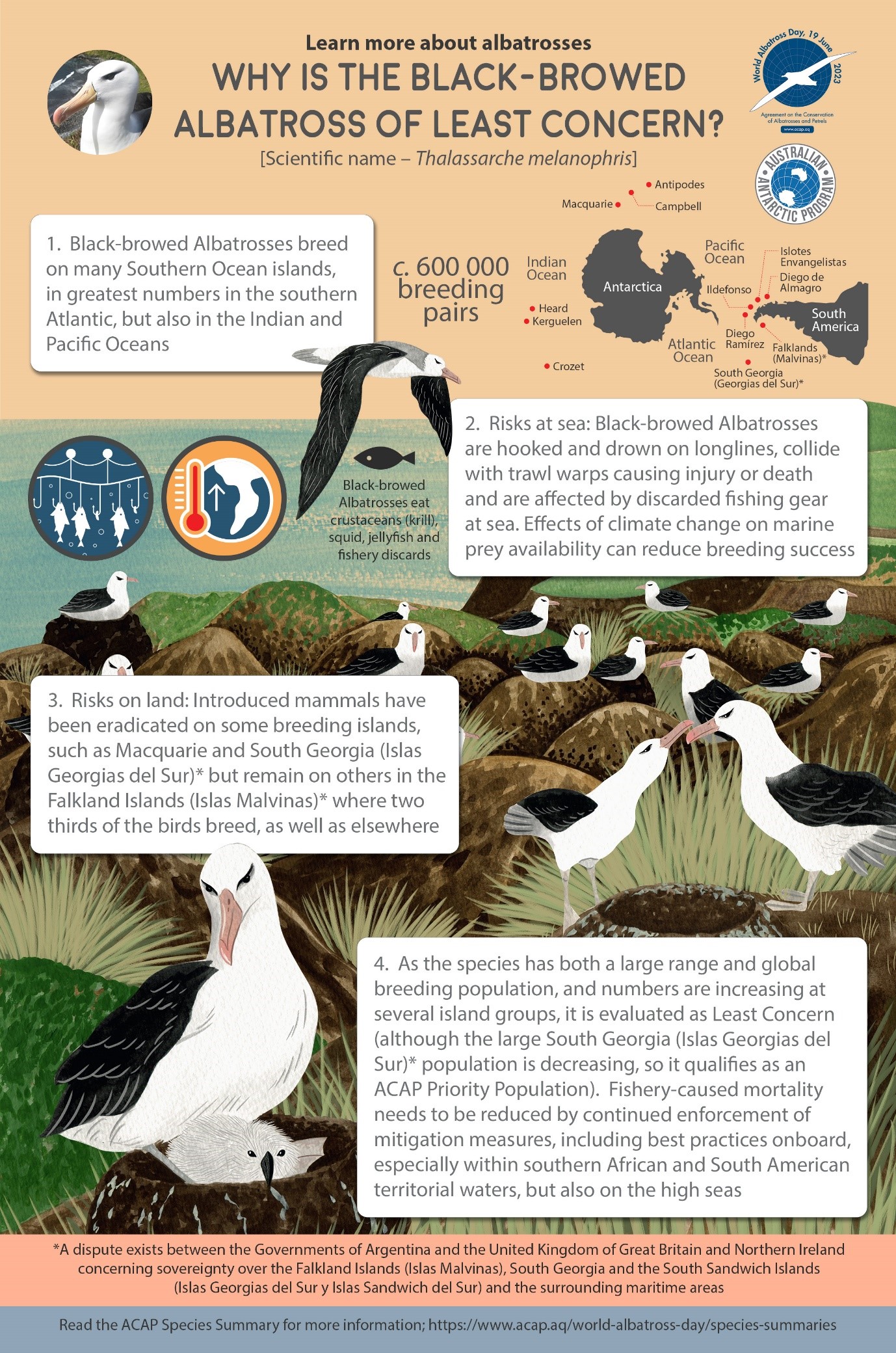
As well as the world’s 22 species of albatrosses, other procellariform (tubenose) sea birds are prone to ingest pieces of plastic found floating on the sea surface and mistaken for food. A notable example is the Flesh-footed Shearwater shown to ingest very large amounts of plastic at one breeding locality at least with a new term “Plasticosis” coined to describe the damage caused. This shearwater has previously been identified as a potential candidate for ACAP listing.
Two albatross species are being used to highlight the theme for this year’s World Albatross Day. These are the globally Endangered Northern Royal Albatross, endemic to New Zealand, and the abundant and widespread Black-browed Albatross. In addition, coverage has been given once more to last year’s two featured species, the Black-footed and Laysan Albatrosses of the North Pacific, which ingest more plastic than do the southern hemisphere species.
For more information visit:
http://www.acap.aq
https://www.facebook.com/AlbatrossesandPetrels

